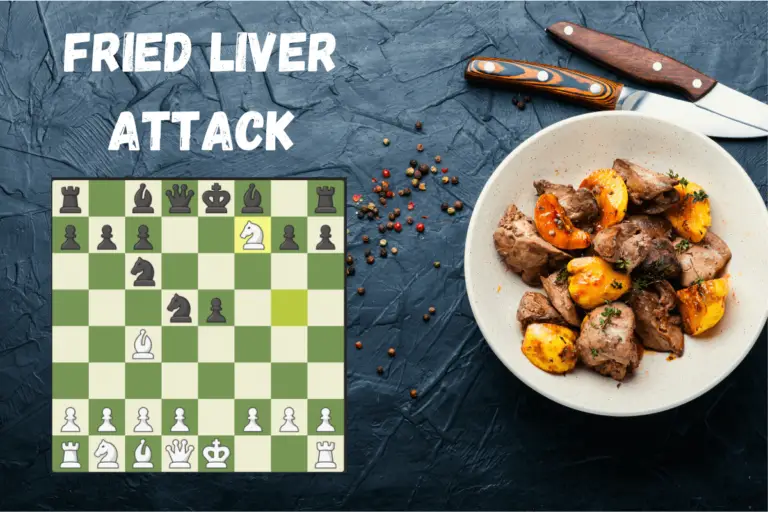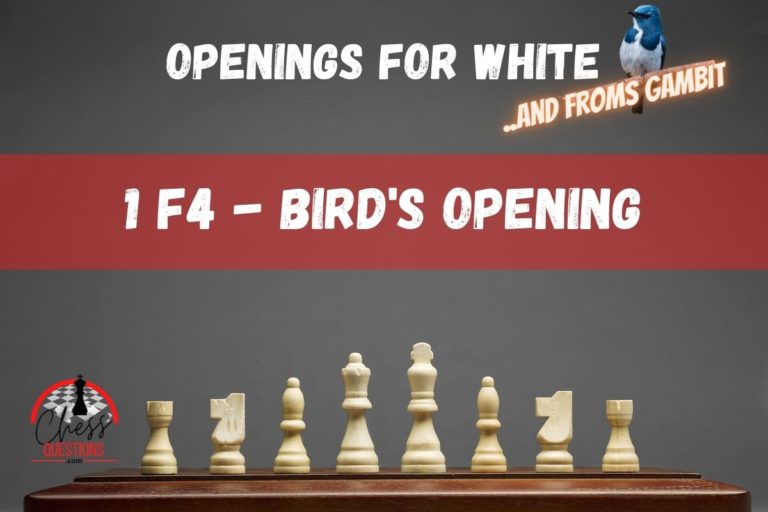4 Best Openings for Black Pieces in Chess [Sicilian – French – Grunfeld – Slav)
⭐⭐⭐ Take 5 minutes to read and improve your chess game ➡️ : This article was first published on, and is Copyright of Chessquestions.com
Choosing the best opening from Black’s side can be a tedious task. Black doesn’t have the luxury of the first move that the White does. Usually, Black’s opening choice revolves around the idea of achieving an equal and solid position, as soon as possible. Making your own structure stable and giving minimum to no chances to White to improve their position is the main goal for Black.
The best openings for black pieces when playing as a beginner in chess are the Sicilian defense, French Defense, Grünfeld defense and finally the Slav defense. At Elite level they may help gain a draw, but for beginners, they provide a good base to go on and attack and win games.
Traditionally, in elite tournaments, playing from Black and making a draw is considered a good result. However, this is far from the truth when it comes to players of lower Elo. Here, the play is more dynamic and the chances of inaccuracies are higher.
Hence, choosing a good opening from Black is crucial. Opting for the right opening that suits your style of play will help you achieve a comfortable position, where you can play with ease and where ideas come to you naturally.
Here are the top 4 opening choices for Black – Choose one and learn it and all the lines well. Play it, see how you do, then come back and learn another.
1. Sicilian Defense
The Sicilian is one of the best openings with the Black pieces. It starts after 1.e4 c5 & offers Black excellent fighting chances. No wonder it has been a go-to weapon for players like Kasparov and Fischer. Today, the biggest exponents of the Sicilian Defense include Maxime Vachier Lagrave and the 2021 World Championship Challenger Ian Nepomniatchchi.
In the Sicilian Defense, the most popular line is the open variation after 1.e4 c5 2.Nf3 d6 3.d4.
The line continues with 3…cxd4 4.Nxd4 Nf6 5.Nc3
And here Black has a variety of choices including some sharp variations like the Sicilian Dragon(5…g6), Najdorf(5…a6), Classical(5…Nc6) or Scheveningen(5…e6).
In all of those lines, Black’s long-term strategy revolves around counterattack. Because of this, sacrifices are very common in the Sicilian Defense.
Also, the opening is objectively sound and it can’t be refuted by the computer. So if you love playing attacking chess, with lots of complications and dynamic ideas, the Sicilian is perfect for you.
2. French Defense
The French Defense is a very solid opening and unlike the Sicilian, isn’t very dynamic. It starts after 1.e4 e6. It’s excellent for players who like to play strategic positions, though a few variations need tactical ideas as well.
Elite players like GM Viktor Korchnoi and GM Nigel Short have used the French defense extensively. Currently, GMs V. Akobian and Alexander Morozevich still use this opening as their main weapon from the black side.
The French defense is ideal for those who don’t like memorizing a lot of lines. That’s because the core of the opening revolves around a few basic ideas such as exchanging the bad c8-bishop as soon as possible or doing the correct knight maneuvers.
The primary French defense variation goes like 1.e4 e6 2.d4 d5 where White has options of – 3. Nc3 is the main line leading to variations like Winaver, Rubinstein and Steinitz etc.
3.e5 is the Advance variation, 3.exd5 is the Exchange variation and 3.Nd2 is the Tarrasch Variation.
Usually, Black’s main idea is to create play on the queen’s side, while White focuses more on the kingside. Computer analysis generally supports the French defense. It gives Black a sound position.
Players who like to keep it solid, while still having aggressive options at hand, should opt for the French defense. They can choose different variations depending upon their opponent’s style of play.
3. Grunfeld Defense
The Grunfeld Defence is one of the most attacking and dynamic options against 1.d4. Instead of playing in the center, Black’s main idea is to first develop their minor pieces. And when the time is right, strike in the center to undermine White’s control on it.
The Grunfeld has been the go-to weapon of former World Champions Garry Kasparov and Vassily Symslov against 1.d4.
Currently, elite grandmasters like Vishwanathan Anand and Maxime Vachier-Lagrave are proponents of this opening.
The move order of the Grunfeld Defense is 1.d4 Nf6 2.c4 g6 3.Nc3 d5.
Now White has many options like 4. Bf4, 4.Bg5, 4.Nf3 or 4.e3.
However, the mainline of this opening continues with 4.cxd5 Nxd5 5.e4 Nc3 6.bxc3 Bg7. After this White has a plethora of options against which Black must be prepared for.
Here the entire play revolves around the d4-square. The control over it is crucial to both sides. Though White has more space and controls the center with their pawns, Black uses it as a perfect target for attack, making it a liability than an asset. This makes the Grunfeld unique.
Black should be quick in mobilizing their minor pieces. Only then, they can challenge white’s center control.
Most variations of Grunfeld are extremely theoretical and sharp. One needs sound knowledge and understanding of the resulting positions. Sacrifices for piece activity are often the way to go forward.
Players who like to deal with dynamic positions and are comfortable with playing thoroughly analyzed variations should opt for this.
4. Slav Defense
Slav Defense arises after 1.d4 d5 2.c4 c6. It’s one of the most famous openings against the Queen’s Gambit and is very solid and structural.
It’s considered as one of the safest and trustworthy options for Black against 1.d4. That’s because it’s difficult to procure an advantage for White. The Slav has been used by World Champions like Kramnik, Anand, and Carlsen. This makes it one of the best openings trusted by World Champions.
White has many options – 3.cd5, 3. Nc3, 3.Bf4, 3.e3 etc.
The main line however is 3.Nf3 followed by 3…Nf6 4.Nc3 after which black can either choose 4…dc4 (pure Slav) or 4…e6 (Semi-Slav).
The main idea in Slav is that Black controls the center by playing 2…c6, keeping the option of developing the c8 bishop open.
While playing the Slav Defense, Black must be aware of the possibility of a minority attack on the queenside. If neglected, it can be quite deadly.
The computer gives an equal evaluation in most lines of the Slav. Statistically speaking, White has the lowest winning percentage in this opening.
Those who don’t prefer to learn theoretical lines and like to play a flexible game should opt for this opening.
Conclusion
Having a good and strong opening preparation from Black is crucial. It can help a player to win or save crucial games in tournaments. Study as many games related to your opening as possible, so that you can gather a plethora of ideas.
The key is not just to memorize the theoretical variations but to understand the reason behind these moves – the underlying motive and the overall strategy!






![When to Fianchetto in Chess [Strategy]](https://chessquestions.com/wp-content/uploads/2021/03/fianchetto-featured-image-768x512.png)
